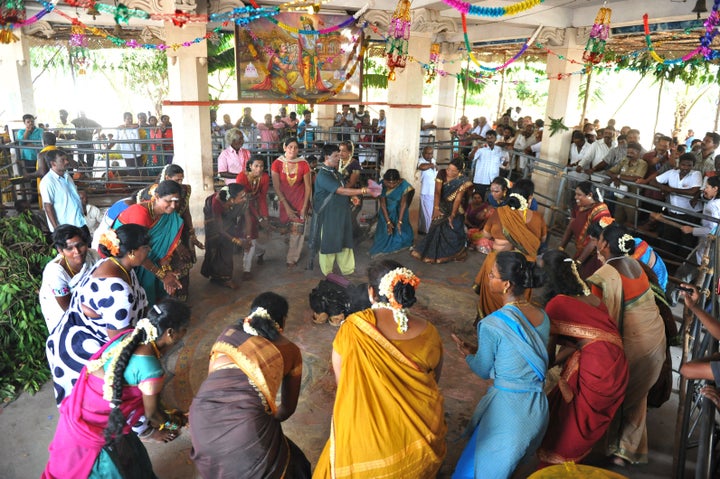
When I sat down to write a post on "how to visit a Hindu temple," I'll admit that I was initially baffled. How does one visit a Hindu temple? In a literal sense, it appears obvious. First, get yourself to one. Second, take off your shoes, and third, step in. Visit, in the most fundamental sense of the word, accomplished.
A visit anywhere, though, is so much more than just the physical action of stepping in and stepping out. Their significance varies from one individual to the next. A vacation to Spain or a business trip to Detroit sound vastly different, but both involve me, the individual, going through the motions of life in a given location and concocting a mental snapshot of the entire experience to pull out in the future.
A trip's purpose doesn't always have concrete shape and form. Because many might not have a tangible reason for visiting a Hindu temple (including myself on many occasions), I instead decided to make this post a Lonely Planet Guide (no affiliation) to the Hindu Temple. Acting as a guide of sorts for the interested visitor is a more promising role than telling others how to visit any place.
Naturally, every Hindu does not attend a temple. Some schools of Hinduism even eschew temples and the rituals often affiliated with them. For those who do attend temples, especially for interested visitors: there is no such thing as the average Hindu temple. They reflect the diversity of Hinduism itself, varying architecturally by region, town, or village of India, by historical era and philosophical school of thought, or by a specific diaspora's spiritual inclinations.
However, as I perceive it, there are three "rules of thumb" -- certain features that a visitor has a high probability of seeing when stopping by any Hindu temple.
Rule of Thumb 1: The Confluence of Polytheism and Monotheism
First and foremost, architecturally, a temple features either one or several shrines containing murtis, images of Hindu deities, to whom the shrines are dedicated. Often, a single shrine might dominate the others, reflecting the temple's affiliation with a primary deity. You may witness devotees circling the shrines as a symbol of respect or offering prayers in front of shrines.
To me, a general recognition of unity in diversity presides at nearly every Hindu temple: an arena in which polytheism and monotheism fluidly interact. Even as multiple shrines combine to form a single temple, several deities mirror the diversity of the indescribable Brahman, the ultimate consciousness underlying existence.
Rule of Thumb 2: The Confluence of Ritual and Devotion
Murtis often reflect the bhakti, or devotional, school of Hinduism, in which age-old mythological stories of justice, compassion, and love honor a single deity, rendering him or her worthy of being placed on a pedestal within a temple.
Inside a temple, perhaps the most colorful process that a visitor might notice is the observance of rituals, or pujas, that represent offerings to the divine. Typically, such rituals symbolize the relationship between the Supreme and the individual, humanizing the Supreme and conversely implying the presence of Brahman in the individual's heart. Rituals involve waking the deity up in the morning with Sanskrit chants, bathing the deity with milk, clarified butter, and water, dressing the deity, and, in the evening, putting the deity to sleep.
Rule of Thumb 3: The Confluence of Individual and Infinite
Pilgrims attend a temple to receive darshan, meaning "sight" in Sanskrit: a metaphorical connection with the Supreme. The image represents an aid for forging this connection mentally.
See the priest circling the deity with a flame and then extending it to the temple-goers? This is the arathi ceremony, which occurs multiple times a day at nearly all Hindu temples. Arathi represents the symbolic surrender of one's existence to the Supreme: a moment that many individuals use for introspection and prayer. As it circles the deity, the flame symbolizes the individual soul's lifelong journey. Then, the priest extends the flame, one-by-one, to each individual in the crowd beside the shrine: a symbolic union of all within an ultimate circle of consciousness.
If ever you plan to book a trip to your nearest Hindu temple, I hope that this brief guide gives you some food for thought. On a less symbolic level than my rules of thumb, they're great places to go for general people watching and good food -- many have scrumptious vegetarian cafeterias. So, if you feel like wandering over to the nearest Hindu temple, here's to a happy and hopefully more informed visit.